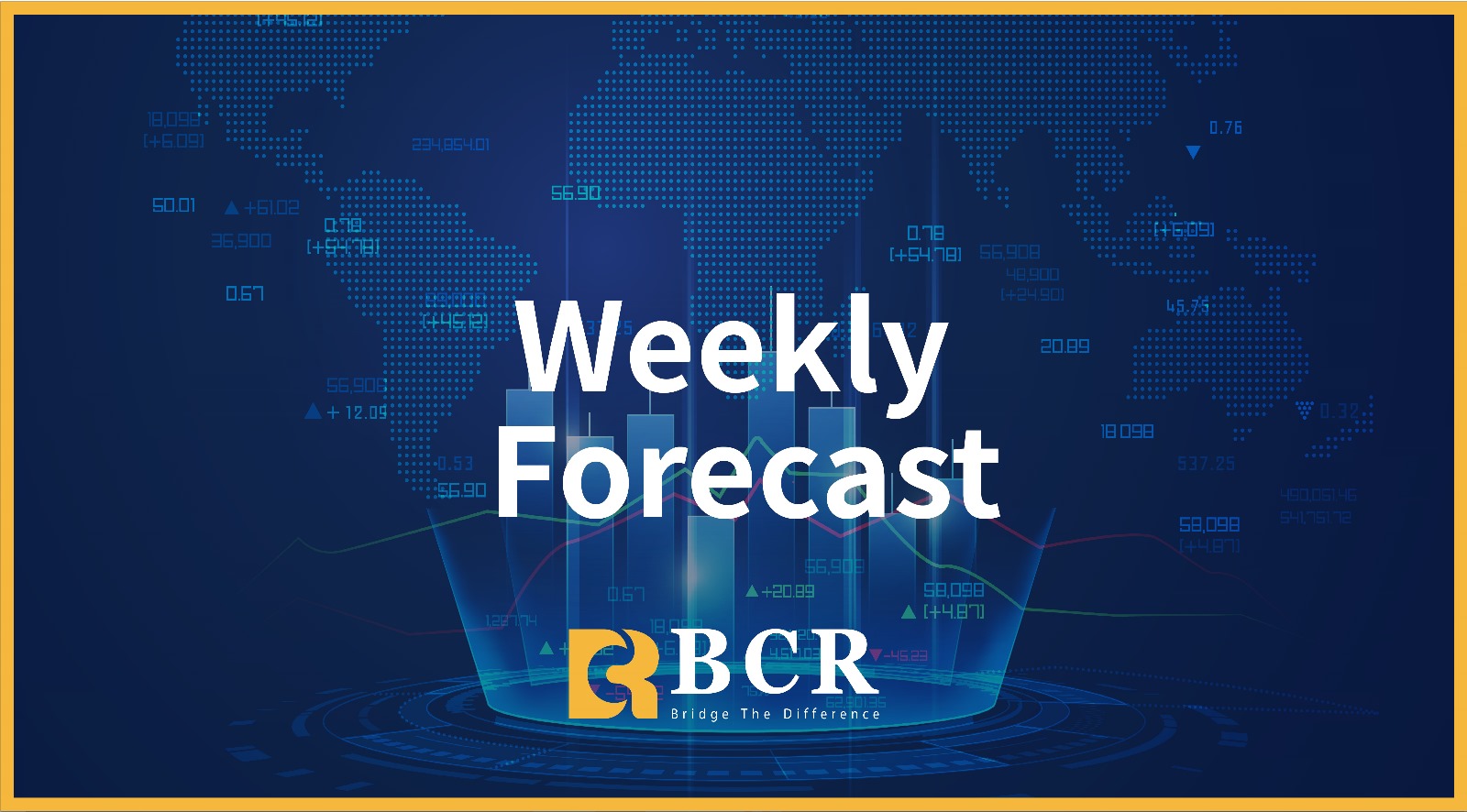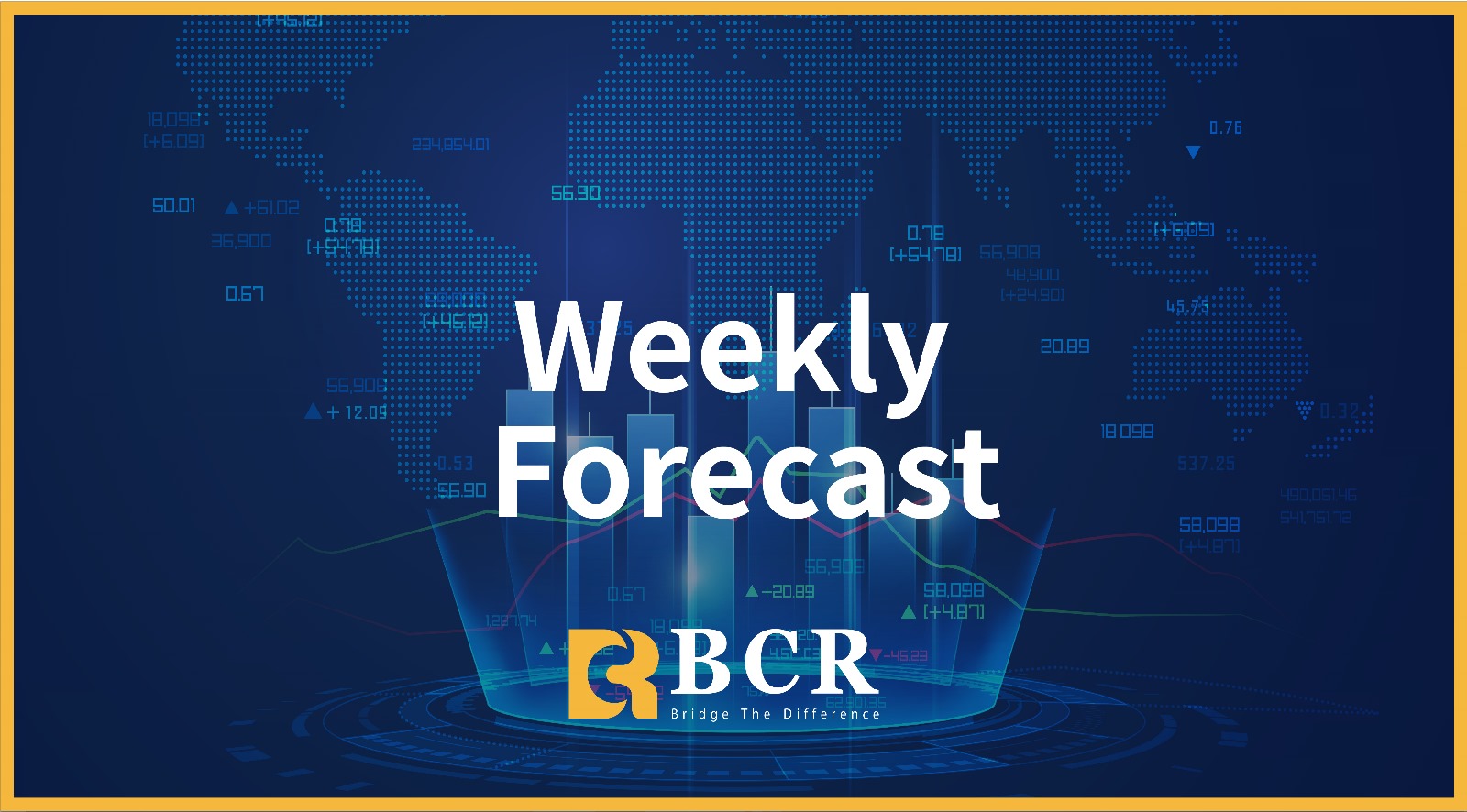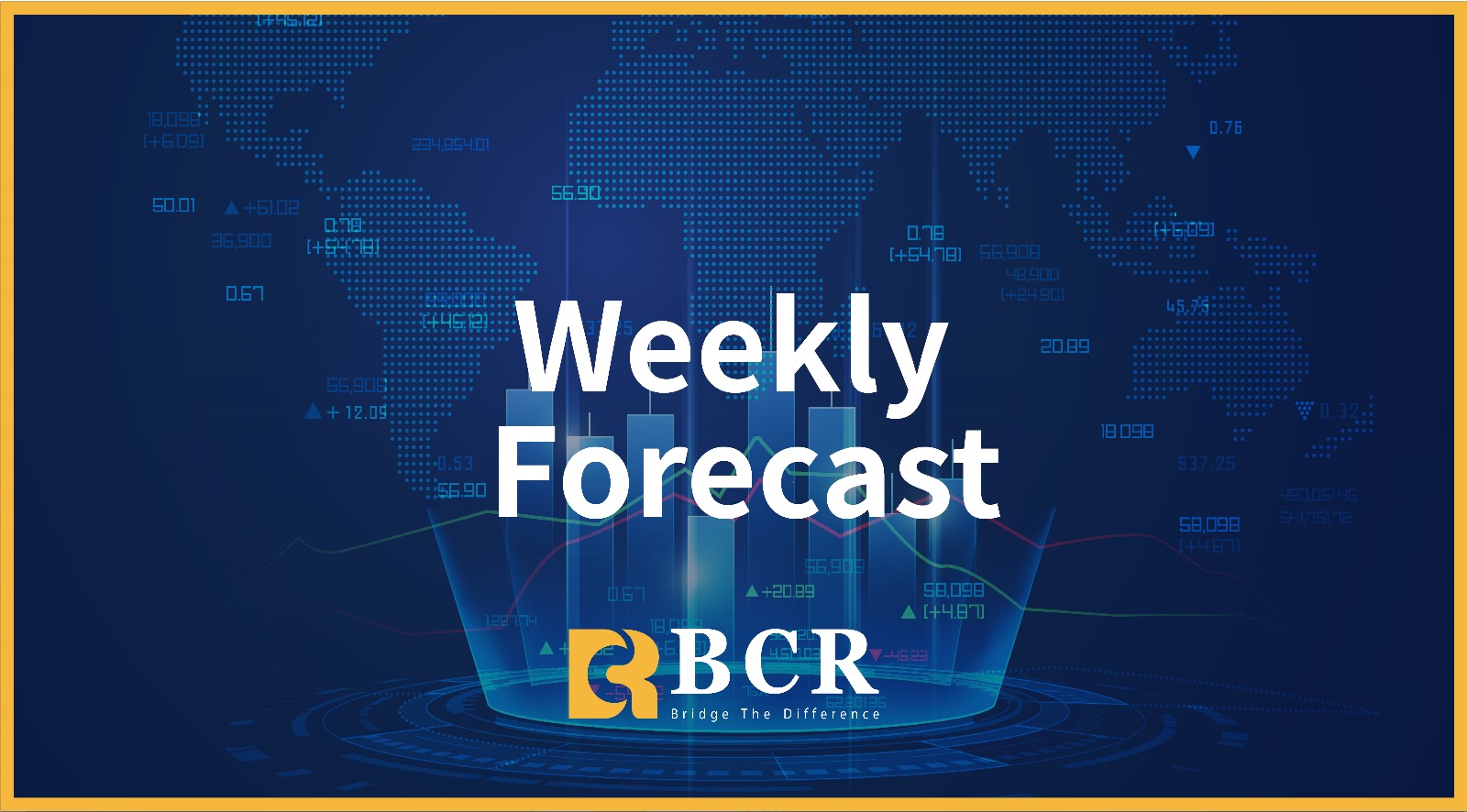





null
Last week, the U.S. CPI, PPI, and retail sales data all supported the Federal Reserve's decision to pause interest rate hikes at the crucial FOMC meeting scheduled for next week. The increasing bet on a prolonged period of high-interest rates is becoming more evident, with the market pricing in a 97% likelihood of a pause next week. The U.S. dollar index rose for the ninth consecutive week, closing the weekend above 105.00 and reporting 105.33 dollars. This sustained growth momentum is supported by strong performance in the U.S. economy.
Spot gold recorded a slight increase last week, but overall volatility remained limited. On Friday, September 15th, spot gold closed at $1,923.60 per ounce, up $13.02 per ounce (or 0.68%) for the week, with a weekly gain of 0.26%. Meanwhile, spot silver edged up by 0.50% last week, closing the week at $23.02 per ounce.
In early September, the major U.S. stock indices saw a slight decline, unlike the typical September crashes seen in previous years. If the stock market can maintain its stability in September, it is believed that the North American stock market will reach new heights in the final quarter of the year. The S&P 500 index closed at 4,450.32 on Friday, down 0.16% from the previous week. The Dow Jones Industrial Average closed at 34,618.24, up 0.12% from the previous week.
The Nasdaq Composite Index closed at 13,708.33, down 0.39% from the previous week.
Boosted by supply shortages, international crude oil prices surged significantly last week, with both WTI crude oil and Brent crude oil hitting new highs for the year mid-week. WTI crude oil briefly surpassed the $90 per barrel mark, while Brent crude oil exceeded $94 per barrel. Both oil prices pulled back slightly from their highs on Friday. Oil prices recorded their third consecutive week of gains, mainly due to production cuts in Saudi Arabia and optimistic sentiment about China's economic recovery leading to supply tightness.
Looking ahead to this week, key data to watch includes the final August CPI for the Eurozone, API and EIA crude oil inventory changes in the U.S. up to September 15th, August CPI for the UK, initial jobless claims in the U.S. up to September 16th, and August CPI for Japan. Major events for investors to monitor this week include the release of minutes from the Reserve Bank of Australia's September monetary policy meeting, as well as interest rate decisions from the Federal Reserve, the Bank of England, and the Bank of Japan.
Important Events this week (Beijing Time):
Monday (September 18th): No major data to watch; Tokyo Stock Exchange closed for Respect for the Aged Day.
Tuesday (September 19th): Eurozone final CPI for August; Reserve Bank of Australia's September monetary policy meeting minutes.
Wednesday (September 20th): API and EIA crude oil inventory changes in the U.S. up to September 15th; UK CPI for August.
Thursday (September 21st): Initial jobless claims in the U.S. up to September 16th; Eurozone preliminary consumer confidence index for September; interest rate decisions from the Federal Reserve and the Bank of England.
Friday (September 22nd): CPI for Japan in August; Bank of Japan interest rate decision.
In addition to the above-mentioned key data and events, investors should also keep an eye on developments related to the global pandemic and the situation in Ukraine, as these factors may also impact financial markets.
U.S. Dollar Index
The U.S. Dollar Index saw its ninth consecutive weekly gain, with the dollar bulls dominating at 105.34, a rare occurrence where it rose in tandem with gold. This week, U.S. CPI, PPI, and retail sales data all supported the Federal Reserve's decision to pause interest rate hikes at the crucial FOMC meeting scheduled for next week. The market is increasingly pricing in a 97% likelihood of a pause. The U.S. Dollar Index rose for the ninth consecutive week, closing the weekend above 105.00 at 105.33. This marked its highest level in six months and its highest closing level in ten months. This sustained growth momentum is supported by the strong performance of the U.S. economy. Economic data released last week provided evidence of inflation rebounding, despite a slowdown in core rates. Additionally, the dovish decision by the European Central Bank is helping boost demand for the U.S. dollar. This week's FOMC meeting is brewing a battle between hawks and doves, with the market expecting no major changes from the Federal Reserve. This is because they recognize that if inflation fails to slow down, they may further raise interest rates, making a pause possible. The current economic conditions indicate that the Fed has the capacity to adapt to another rate hike, and an unexpected dovish shift could trigger a substantial adjustment in the U.S. dollar and commodity prices.
Last week, the U.S. Dollar Index not only breached the crucial psychological level of 105 but also closed the week at 105.33, marking the second time this year that the index has been preparing to breach 105. It also reached its highest level in six months and its highest closing level in ten months. The current price is attempting to test resistance levels currently at 105.35 (double top from February 22nd and 23rd) and 105.70 (upper channel trendline). Furthermore, the weekly chart of the U.S. Dollar Index and the technical indicator RSI have formed a "hidden bullish divergence" pattern twice, from May 2021 to July 2023 and from January 2022 to July 2023, which continues to support the dollar. Once it effectively breaks through 105.88 (this year's March high), further gains could target 107.03 (50% Fibonacci retracement level from 114.50 to 99.57) or even higher levels. However, it is essential to be cautious as a retreat below 105.00 and 104.90 (middle axis of the ascending channel) could require a correction at any time. Therefore, it is not ruled out that there may be a short-term technical pullback from the highs. On the bearish side, short-term targets would be around 104.57 (260-day moving average) and 104.45 (support trendline extending from the July low of 99.57) or even lower to 103.93 (240-day moving average).
Conclusion for this week: The U.S. Dollar Index may see a retreat to below 105 and 104.90 (middle axis of the ascending channel) or require a correction at any time.
Expected Range this week: 104.00—105.88.
Strategy for this week: It is advisable to consider buying the U.S. Dollar Index on dips this week.

WTI Crude Oil
Oil prices are set to challenge the $100 mark in the near future.
Driven by an intensifying supply-demand imbalance and the latest industrial output report from China, WTI crude oil prices continued their upward trend for the third consecutive week, reaching a ten-month high of $90.52 per barrel. WTI crude oil has continued to exhibit its bullish nature, seemingly ignoring short-term bearish factors like the unexpected increase in EIA inventories. Instead, the crude oil market responded swiftly to China's reserve requirement ratio (RRR) cut, rapidly strengthening oil prices, which have now continued their upward trend and breached the $90.0 mark. The latest data shows that China's crude oil imports have surged by 30% year-on-year, reaching the third-highest level on record. Therefore, China's latest stimulus measures are expected to boost crude oil demand. Additionally, this bull market in oil prices has been driven by supply-side factors, as Saudi Arabia and Russia announced additional production cuts in July and further extended these cuts until the end of the year in early September, which has been a key driver of the oil price rally. In the first half of the year, oil bulls underestimated the global recovery situation. However, as we enter the second half of the year, demand in some economies is improving, providing stronger reasons for the oil bull market.
From a technical standpoint, attention is focused on whether WTI crude oil prices can break through the $90 level and continue to rise or if they will experience a correction to alleviate the significantly overbought indicators. Last week, WTI crude oil saw a significant increase of 4.26%, and it has risen by over 7% so far this month. It broke through the $90 mark on Monday, reaching an intraday high of $90.52, marking the highest level in over ten months since November last year. If it can successfully hold above $90.0, the next upside targets could be the potential upper channel trendline at $91.50 and $93, among other levels. However, considering that the RSI indicator has reached its most severe overbought level since March 2022 (78.00), if WTI oil prices fail to break above the $90 mark and instead retreat, caution should be exercised for a potential pullback, with key support levels below, notably at $88 (lower channel trendline) and $86.15 (14-day moving average), among other levels. Of course, after WTI crude oil prices broke through the long-term resistance level of $84.50, the upward targets may not stop at $90, so even in the event of a correction, the bullish outlook is unlikely to change, and a resumption of the upward trend is highly probable after a sufficient adjustment.
Conclusion for this week: Oil prices are currently in a mid-term uptrend, with $87.0 turning into a strong support level. According to Fibonacci technical analysis, if WTI crude oil stabilizes between $87.00 and $86.00, there may be further rebound potential to challenge levels at $96.50 and $100.00.
Expected Range this week: $86.00—$93.00.
Strategy for this week: It is advisable to buy crude oil on dips this week.

Spot Gold
Gold prices have shown a V-shaped rebound trend.
Before the weekend, gold prices experienced a significant turnaround, rising to $1,930.50, forming a "double top" pattern with the initial level of $1,930.60 at the beginning of the week. Technical analysis suggests the possibility of a larger breakout next week, which would be a stronger bullish signal. Friday's bullish reversal and subsequent price movements demonstrated strong intraday momentum, indicating that a correction may have been completed, further confirming the bullish outlook. The key price level to break now is the high of $1,931, which is a minor swing high. A close above this level in the days ahead would confirm the strength and increase the chances of a continued bullish trend. On the weekly chart, there is also a potential bullish pattern, with gold ending last week's trading with a bullish hammer candlestick pattern. A breakout above the previous week's high of $1,930.50-60 would be a bullish weekly-level breakout, and a daily close above this price level would confirm the strength. The setup for the past three weeks has been a bullish consolidation strategy, where the market initially triggered a move lower from within the range of the previous week but closed back within the high of that range. There are now signs that the recent low in volatility may have concluded, with initial upside targets including the range from the high on September 1st at $1,953 to the dip around $1,946.
Looking at the daily chart, gold prices were in a downward channel for most of last week, briefly breaking below the support at $1,903.50, which is the 38.2% Fibonacci retracement level of the move from the September 2022 low of $1,614.90 to the May 2023 high of $2,081.80. The lowest point reached was $1,901. Just before the weekend, the market witnessed a V-shaped rebound pattern, breaking above the $1,915 level and heading straight towards the upper level of $1,930.50, forming a "double top" with the high at the beginning of the week. The short-term upward momentum is currently restrained by the levels of $1,930.50-1,930.60 and $1,931.30 (23.6% Fibonacci retracement level of the move from $2,081.80 to $1,884.90). While these levels may serve as obstacles to further upward movement, once breached, they could intensify the bullish pressure, opening the door to $1,953.00 (this month's high) and $1,953.80 (25-week moving average). The next target price level could be aimed at $1,960.10 (23.6% Fibonacci retracement level of the move from $2,081.80 to $1,884.90). If gold prices continue to be suppressed by the levels of $1,930-1,931 and break below the 200-day moving average ($1,922.80) support again, it could potentially open up a new downward trend towards the 220-day moving average at $1,908.70 and $1,901 (last week's low).
Conclusion for this week: Positive economic data from China has improved economic expectations for the world's largest gold consumer, China, and the safe-haven U.S. dollar has also slightly retreated. Additionally, gold prices held onto the critical support level of $1,900 after rebounding, which has attracted buying interest on dips, providing momentum for a rebound in gold prices.
Expected Range this week: $1,875—$1,938.
Strategy for this week: Consider selling gold on rallies this week.

Spot Silver
Silver prices saw a strong rebound before the weekend.
Last week, the price action in silver appeared quite interesting. Compared to gold, silver completely recovered the losses of the previous four trading days on Friday, recording a noticeable gain of 0.45%. Silver prices did not form a lower swing low and instead showed a bullish pattern after testing the previous swing lows. Prices also moved above $23.00, indicating a fairly strong bullish momentum. If this pattern persists, silver prices may continue to strengthen towards the $24.55 and $25.00 range. Silver prices tested the previous swing lows and rebounded after the price low was reached, successfully pushing back above $23.00. The current situation in silver prices may turn bullish as they have tested the previous swing lows. However, prices may also hover around the swing lows until the market reacts to the Federal Reserve's announcement later this week.
Silver currently seems to have found support near an upward support trendline that has been in place since the September 2022 low of $17.55 (currently around $22.05). This support zone is also very close to the position of the 220-week moving average, which is around $22.00. Given the importance of this support, it is possible that silver could reverse higher from here. Encouraging data from China is also supporting other precious metals. Silver broke above the key resistance at $23.00 per ounce just before the weekend's close, and the closing price was above $23.00. This is expected to shift the outlook for silver to bullish. If this occurs, it could leave room for silver to continue its consolidation pattern since March. Short-term resistance levels to watch include $24.12 (50% Fibonacci retracement level of the move from $26.12 to $22.11) and $24.55 (downward resistance trendline extending from the May high of $26.12). Conversely, a significant break below the key support levels of $22.11 (May low) and $22.05 could expose the 76.4% Fibonacci retracement level of $21.37 (from $19.90 to $26.12).
Conclusion for this week: Looking ahead, silver may test the lower end of the range around $22.5. Considering the overall downtrend in silver, there is a possibility of breaking through the bottom of the range. Key support levels to watch below are $22.5 and $21.0.
Expected Range this week: $22.11—$24.55.
Strategy for this week: It is advisable to consider selling silver on rallies this week.

AUDUSD
The Australian Dollar rebounded from its lows as risk sentiment improved in the latter half of last week. AUD/USD is continuing to form a potential double bottom pattern after a lackluster performance in the first half of the week. Double bottom patterns typically signal exhaustion of selling pressure before a sustained upward move. The latest data from the Australian Bureau of Statistics, released in the latter half of last week on September 14th, showed that Australia's unemployment rate for August remained steady at 3.7%, in line with expectations, and continues to stay at historically low levels. Following the data release, the AUD/USD exchange rate saw a short-term uptick followed by consolidation and is currently showing signs of recovery. The overall Australian job market still shows signs of cooling, reducing the urgency for further policy tightening by the Reserve Bank of Australia (RBA). The market continues to expect the RBA to pause its rate hike next month.
Overall, while interest rate paths for Australia and the United States are largely aligned through the end of the year, robust economic data from the United States has provided more support to the US Dollar. In contrast, the Australian economic outlook has been deteriorating since last year, primarily due to weakening demand from its largest export destination, China. In recent weeks, the Chinese government has announced a series of stimulus measures to alleviate some downside risks, and the effects of these measures on improving economic prospects are gradually becoming evident. The sharp rebound in the Chinese Renminbi last week helped stabilize the AUD/USD exchange rate at lower levels.
Over the past week, the AUD/USD exchange rate has experienced narrow fluctuations, oscillating within a range of 0.6376 to 0.6473. The currency pair has formed a "double bottom" around 0.6357-0.6360. The neckline resistance is currently at 0.6522. If AUD/USD successfully breaks through this resistance, buying momentum is expected to accelerate. This would pave the way for the exchange rate to rise further towards 0.6626 (50% Fibonacci retracement of the move from 0.6895 to 0.6357) and 0.6629 (30-week moving average). At present, AUD/USD is trading within a "downward channel," and a break below 0.6400 (a psychological level) could lead to a retest of the previous "double bottom" lows at 0.6357 and 0.6315 (support trendline extending from the February low of 0.6563). The next level to watch would be 0.6207 (lower channel boundary).
Conclusion for this week: AUD/USD has formed a double bottom at 0.6357, which is typically a bullish signal in technical analysis. Therefore, as buyers target the key resistance zone at 0.6485-0.6488, the currency pair may continue to rise.
Expected Range this week: 0.6357-0.6522.
Strategy for this week: It is advisable to consider buying the Australian Dollar on dips this week.

USDJPY
USD/JPY reached another recent high at 147.95 last week, approaching the 148.00 yen level. The trading price of USD/JPY is at levels last seen in early November 2022. The new high since October 2022 suggests that speculators believe that the USD/JPY currency pair is overbought, but it can become even more overbought after being overbought. Short-term considerations should closely monitor global market concerns about US inflation data, including rising energy costs amid current values of Western crude oil. Also worth noting is that Japan's inflation data earlier this week came in slightly below expectations for the Producer Price Index report. A weaker yen could help Japanese export companies, which remain a critical component of the country's economic window. Many analysts in Japan may have a positive outlook on the better industrial data today. However, even with these better economic data, the continued uptrend of USD/JPY remains a top priority on short-term charts. Volatility is expected in the future for the USD/JPY currency pair, with the likely direction being further upward.
As shown in the daily chart, at the beginning of last week, USD/JPY gapped down 80 points following a speech by Bank of Japan Governor Kuroda. It reached a low of 145.89 for the week. However, this decline was short-lived, and USD/JPY rose to its highest level since November 2022, with the currency pair returning to recent highs at 147.95 over the weekend. Currently, on the weekly chart, USD/JPY is oscillating near the top resistance line of the "ascending wedge" at 148.40. It formed a "hammer" bullish pattern at the end of last week, indicating strong bullish control in the market and the potential for a bullish breakout. Looking ahead to the next potential uptrend, initial resistance is focused on 148.00-148.40, with further attention to 148.80 if broken. If the uptrend continues, bulls may aim to challenge the significant psychological level of 150.00, which is also the upper boundary of the upward channel since early March. Conversely, in a bearish scenario, technical support for USD/JPY is at 146.72 (5-week moving average) and 145.90 (last week's low). If the downtrend continues, the next potential support area should be around the 144.44 yen level, the low point of this month.
Conclusion for this week: USD/JPY quickly recovered from a brief dip and is back on its upward trend since earlier this year, indicating strong bullish control in the market with the potential for a bullish breakout.
Expected Range this week: 143.86-150.00.
Strategy for this week: Consider buying the US Dollar on dips this week.

GBPUSD
The British pound continued to be under pressure against the US dollar last week due to relatively weak UK Gross Domestic Product (GDP) data and strong US consumer inflation data. The currency pair closed at 1.2380, marking a weekly decline of 0.67%. The economic conditions in the UK are not favorable. Consumer inflation remains above 6%, one of the highest inflation rates among developed countries. Meanwhile, data released on Wednesday showed economic contraction in July, with GDP declining by 0.5% after growing by 0.5% the previous month. Therefore, the challenge for the Bank of England is how to deal with this stagflation. The Bank's Governor, Andrew Bailey, recently stated that there is no need for further rate hikes. The British pound stabilized after strong US consumer inflation data was released. GBP/USD is currently hovering just below 1.2400 after touching a new low at 1.2378 since May. The pound had a poor performance last week as expectations for further rate hikes by the Bank of England diminished. The currency pair failed to benefit from the correction in the US Dollar Index.
From a technical perspective, GBP/USD has been in a downtrend since reaching a peak at 1.3134 on July 14th. Its exchange rate closed below the significant 200-day moving average (1.2430) for the first time since March and below 1.24 for the first time since May, closing at 1.2380. This could be seen as a new bearish trigger. Furthermore, the RSI indicator on the weekly chart remains around the 42 area, far from oversold territory. This further suggests that the path of least resistance for GBP/USD is to the downside. Nonetheless, consider resuming bearish views after confirming a break below the 1.2400 level. Following that, GBP/USD may accelerate its decline, testing the May monthly volatility low area around 1.2310-1.2300, and then move lower to test the next relevant support levels around the 50-week moving average at 1.2279 and the 1.2240 area (lower boundary of the downward channel). On the other hand, if GBP/USD's exchange rate sees further upside, it may encounter some resistance around the 1.2460 area (support line extending from the May low at 1.2308). A successful break above this resistance area could trigger a round of short-covering moves, lifting GBP/USD to the psychological level of 1.2500. Although there is a possibility of a quick retreat near the 134-day moving average at 1.2579, the recovery momentum may extend to the 100-day moving average, currently near 1.2650.
Conclusion for this week: Consider resuming bearish views after confirming a break below the 1.2400 level. GBP/USD may accelerate its decline, testing the May monthly volatility low area around 1.2310-1.2300.
Expected Range this week: 1.2279-1.2579.
Strategy for this week: Consider selling the British pound on rallies.

EURUSD
The Euro against the US Dollar is currently recording its longest consecutive decline since 1997, with a weekly decline of 0.37% to 1.0660. Retail traders in the US continue to bet on the long side, and EUR/USD is approaching its lowest levels since March at 1.0632, moving towards its ninth consecutive week of decline. The European Central Bank (ECB) has raised interest rates for the tenth consecutive time, bringing inflation back to target levels. The latest forecasts suggest that the decline in inflation may be more challenging than previously thought. The dovish shift at the ECB suggests that interest rates may have peaked for the short term, leading to a decline in the EUR/USD exchange rate, which has already fallen below the 1.0700 level. From a technical perspective, EUR/USD recently broke below the critical 200-day simple moving average at 1.0827 for the first time in 2023. This is considered a significant technical signal that has piqued the interest of bearish traders. Furthermore, oscillators on the daily chart show that prices are still in a deep negative zone and have not yet entered oversold territory, further validating the negative outlook for EUR/USD.
EUR/USD has expanded its decline below the 200-day moving average. Currently, the price has fallen to the May low at 1.0635 and closed at the lowest level since March at 1.0660. In light of this, EUR/USD is facing a potential key turning point. However, even if there is a rebound from support, the exchange rate may not necessarily overturn the horizontal channel's lower boundary support line at 1.0790 on the weekly chart, which has been in place since the beginning of the year and now serves as a resistance line. If the exchange rate fails to break above this lower boundary, it may guide prices lower to the May low at 1.0635, forming a bearish "double bottom" pattern with last week's low at 1.0632. If this double bottom is broken, it would strengthen the bearish view towards 1.0405 (50% Fibonacci retracement of 0.9535 to 1.1275). The initial support lies at the 65-week moving average at 1.0552. In the case of a reversal in the trend, a rebound could target 1.0790, followed by a retest of 1.0864 (23.6% Fibonacci retracement) and the 10-week moving average at 1.0911.
Conclusion for this week: EUR/USD is currently at its lowest levels since March at 1.0632. Given this, EUR/USD is facing a potential key turning point.
Expected Range this week: 1.0405-1.0790.
Strategy for this week: Continue to consider selling the Euro on rallies.

USDCNH
The Chinese yuan exchange rate experienced two sharp rises last week. Early last week, the People's Bank of China (PBOC) verbally intervened in the market on Monday, combined with positive credit data, causing the yuan to surge temporarily. USD/CNH fell sharply below 7.3 to a low of 7.2922. The PBOC's verbal intervention had a significant impact, causing USD/CNH to plummet upon hearing the news. Simultaneously, additional financial data provided a boost to the yuan, with the data showing an increase of 1.36 trillion yuan in new loans in August, exceeding expectations of 1.2 trillion yuan. The previous month's figure was only 345.9 billion yuan, marking a multi-year low, which had put pressure on the yuan due to pessimism about China's economic outlook. Over the weekend, China's economic data exceeded expectations, leading to a second sharp rise in the yuan exchange rate, with USD/CNH hitting a low of 7.2599. This is another major positive development following the PBOC's verbal intervention and impressive social financing data early last week.
However, the PBOC announced its second reserve requirement ratio cut of the year last week. The further widening of the interest rate differential between the two countries has put pressure on the yuan, and USD/CNH briefly traded below the 7.30 level. Currently, economic data, including China's August inflation figures, are starting to release preliminary positive signals. If this momentum continues, the market may regain confidence in economic growth and the yuan exchange rate. However, the potential impact of the ongoing resilience of the US economy on the USD/CNH exchange rate cannot be ignored. Going forward, continued attention to the performance of economic data in both China and the US, as well as changes in their respective monetary policy paths, will be crucial.
On the daily chart, the recent trend of USD/CNH has been oscillating within a "sideways channel" for over a month. Such a pattern typically harbors a risk of a reversal to the downside at the high end of an uptrend. Combined with the fact that the decline in the exchange rate began precisely at the high point of the oscillation that began in October of last year, it strengthens the possibility of a reversal in the trend. If USD/CNH continues to decline below the support levels of 7.2660 (lower boundary of the sideways channel) and 7.2590 (upward support trendline starting from the May low of 6.8964), it will confirm a reversal of the recent uptrend and may open up further downside potential. The initial target would be around 7.2168 (80-day moving average) and 7.2000 (psychological support level). If those levels are breached, the next level to test would be around 7.1500 (August 5th low). On the other hand, if USD/CNH does not decline and instead rebounds, the initial resistance levels to watch would be 7.3000 (psychological level) and 7.3230 (midline of the sideways channel).
Conclusion for this week: USD/CNH briefly traded below the 7.30 level last week. If this momentum continues, the market may regain confidence in economic growth and the yuan exchange rate.
Expected Range this week: 7.2168-7.3022.
Strategy for this week: Consider selling the US dollar on rallies.

Disclaimer:
The information contained herein (1) is proprietary to BCR and/or its content providers; (2) may not be copied or distributed; (3) is not warranted to be accurate, complete or timely; and, (4) does not constitute advice or a recommendation by BCR or its content providers in respect of the investment in financial instruments. Neither BCR or its content providers are responsible for any damages or losses arising from any use of this information. Past performance is no guarantee of future results.
More Coverage





Risk Disclosure:Derivatives are traded over-the-counter on margin, which means they carry a high level of risk and there is a possibility you could lose all of your investment. These products are not suitable for all investors. Please ensure you fully understand the risks and carefully consider your financial situation and trading experience before trading. Seek independent financial advice if necessary before opening an account with BCR.
BCR Co Pty Ltd (Company No. 1975046) is a company incorporated under the laws of the British Virgin Islands, with its registered office at Trident Chambers, Wickham’s Cay 1, Road Town, Tortola, British Virgin Islands, and is licensed and regulated by the British Virgin Islands Financial Services Commission under License No. SIBA/L/19/1122.
Open Bridge Limited (Company No. 16701394) is a company incorporated under the Companies Act 2006 and registered in England and Wales, with its registered address at Kemp House, 160 City Road, London, City Road, London, England, EC1V 2NX. This entity acts solely as a payment processor and does not provide any trading or investment services.